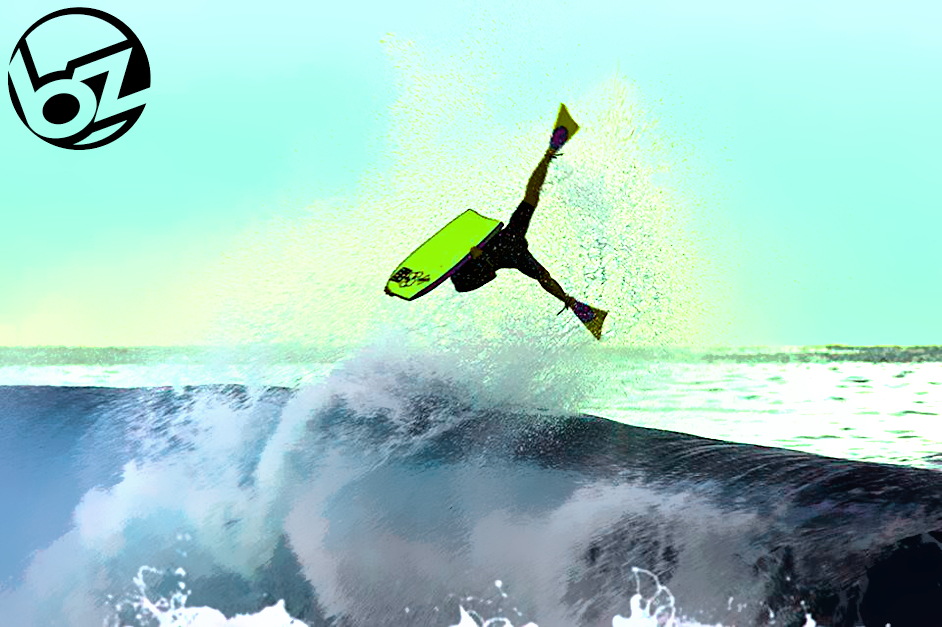Bodyboarding originates from an ancient form of riding waves on one’s belly. Polynesian people rode “alaia” (pronounced ah-lie-ah) boards either on their belly, knees, or feet (in rare instances). Alaia boards were generally made from the wood of Acacia koa and ranged in length and shape.[1] They are distinct from the modern stand-up surfboards in that they had no ventral fins.[2] Captain Cook was recorded seeing Hawaiian villagers riding such boards when he came to Hawaii in 1778. The boards he witnessed were about 3′ to 6′ and were ridden “prone” (on the belly) or on the knees. Alaia boards then evolved into the more modern “paipo” (pronounced pipe-oh) board. Paipo boards were either made of wood or fiberglass. Fiberglass boards usually had fins on the bottom.[3] Tom Morey hybridized this form of riding waves on one’s belly on a paipo to his craft of shaping stand-up surfboards.
On July 9, 1971, Tom Morey invented the modern bodyboard.
Il Bodyboarding proviene da un’antica forma di surfare le onde proni sulla propria pancia. Il Popolo polinesiano amava surfare “Alaia” (pronunciato ah-ah-lie), sulla pancia, in ginocchia o piedi (in rari casi). Le tavole Alaia erano generalmente realizzate in legno di Acacia koa e variavano di lunghezza e forma. Si distinguono dalle moderne tavole da surf, oltre per la lunghezza anche perchè non avevano le pinne ventrali. Il Capitano Cook scrisse nei suoi diari di aver visto gli abitanti delle Hawaii surfare in questo modo, nel 1778. Le tavole che vide erano circa lunghe da 3′ a 6′ piedi e erano cavalcate sulla pancia o sulle ginocchia. La Tavola Alaia poi si è evoluta nella più moderna “paipo” (pronunciato pipe-oh). Le tavole paipo erano o in legno o in vetroresina. Le tavole in vetroresina di solito avevano le pinne ventrali. [3] Tom Morey ha messo insieme questa forma di cavalcare le onde sulle paipo con la sua arte di plasmare tavole da surf.
Il 9 luglio 1971, Tom Morey ha inventato il moderno bodyboard.

